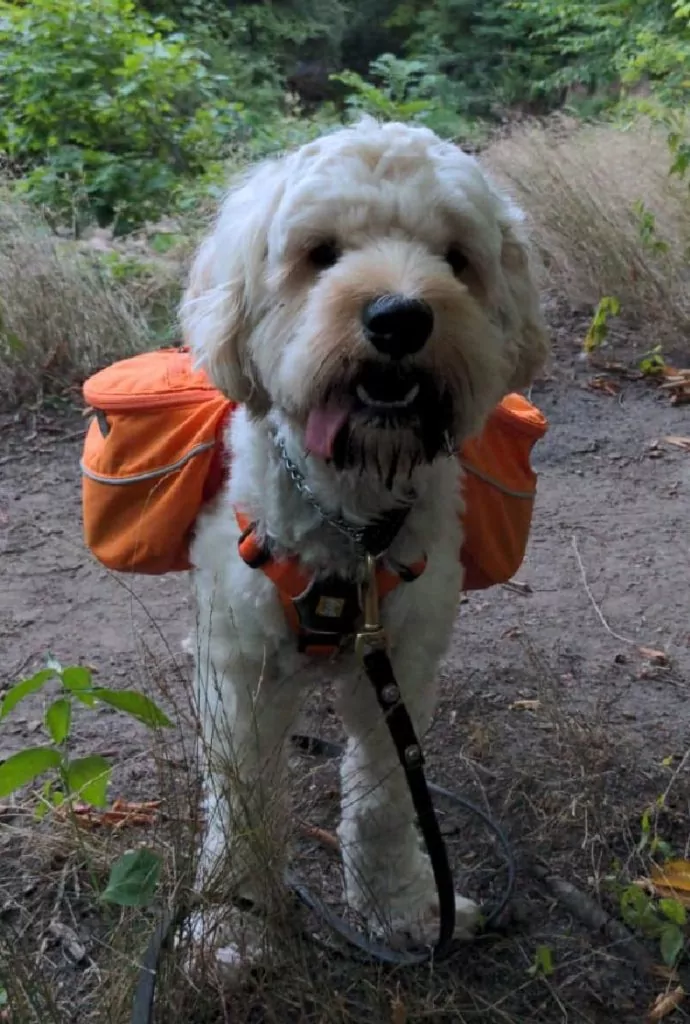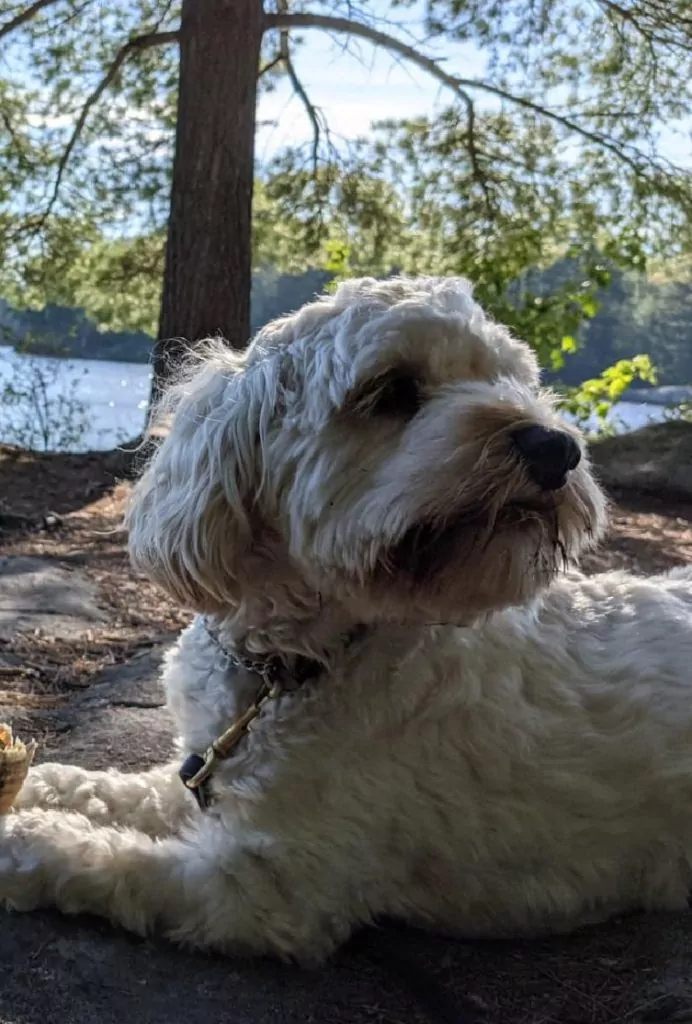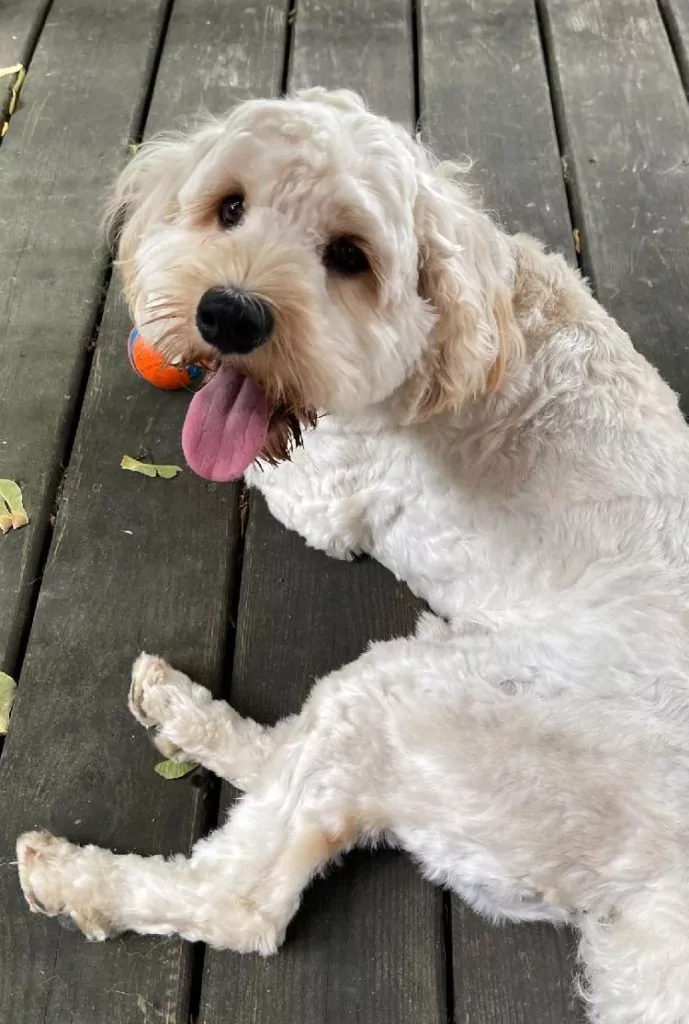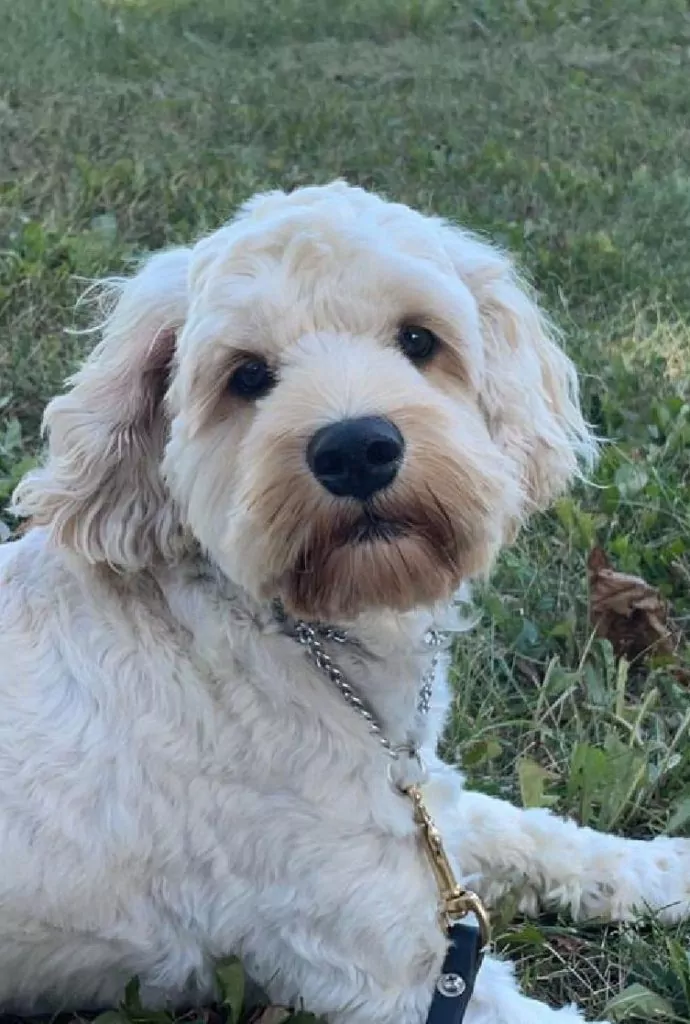My client, an avid hiker and camper, recently took her dog Max, a one-year-old cockapoo, on his very first camping trip. We’d prepared for it for months and were thrilled that Max had mostly behaved, enjoyed himself, and come back feeling like a million bucks.
Things weren’t always so positive for Max and his people, however. As new dog owners, Max’s guardians, an active brother-sister duo living with their senior parents, had come to me seeking solutions to Max’s reactivity. There was hardly a thing that didn’t trigger Max, including but not limited to noises from the neighboring yard, people and dogs on the streets, and any fast-moving things like joggers, bikes, mopeds, and so on.
Sometimes Max would be triggered by nothing that our human eyes could see or our human ears could hear. Once activated, Max would stay in that heightened state, and my clients were at a loss on how to help him get his brain back. They sought help from traditional trainers who taught commands such as sit or leave it as a way of dealing with his reactivity. Because it failed to account for the true cause of the dog’s anxious behavior—his way of life—this training approach went nowhere.
When we began working together, we addressed Max’s way of life, instituting a structured schedule, crating, and activities meant to engage him physically and mentally. We worked on getting everyone in the family on the same page. All these changes were challenging at first, particularly in terms of convincing my clients’ elderly parents to quit spoiling Max and to get over their need to have him around all the time. Max resisted, fiercely barking and fussing in the crate. He continued reacting to people and dogs on the street and on hiking trails and had a hard time settling when loose in the house. It was a few months of this, but my clients stuck it out. They could see remarkable improvements in Max appearing here and there, which kept them focused and optimistic.
One of the most important factors for Max was the level of physical exercise and mental challenge that he required. He was always at his best after big hikes and camping trips.
Tugging, playing ball, and other prey games were essential for his stability. The case of Max and other cockapoos I have dealt with suggests that this “designer breed” can at times be more than what people have bargained for in getting a small dog. These dogs can have a lot of spunk and drive that need to be channeled correctly in their way of life.
Max and his people are in a much better place now. He is excellent in his crate, settles down nicely when loose in the house, and is much less reactive to things on the street. There’s no doubt in my mind that their next camping trip will be another success, given the care and commitment that his people have put forth by establishing foundations and channeling his drives.



